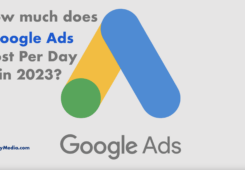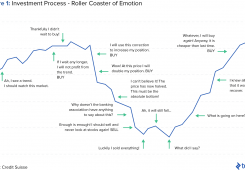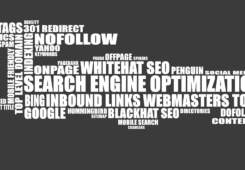Google Shopping ads can be a great way to promote your products and drive traffic to your e-commerce store. When done correctly they can save time and money. This article will discuss the most common mistakes to avoid when running Google Shopping ads.
1. Not Having a Clear Call-to-Action in Google Shopping Ads Campaign
A clear call-to-action (CTA) is essential for any marketing campaign, including Google Shopping ads. It tells potential customers what you want them to do and how they can take action. With a clear CTA, potential customers may be confident of what to do next and could be more likely to convert. Therefore, ensure your ad has a clear and compelling CTA encouraging people to take action, such as “Shop Now” or “Learn More.”
2. Ignoring Negative Keywords
Negative keywords are a vital component of any Google Shopping ad campaign. These are the keywords that you want to exclude from your ad. For example, if you sell high-end luxury watches, you might want to exclude the keyword “cheap watches” to ensure that your ad only appears to people interested in buying high-quality products. Ignoring negative keywords can lead to wasted ad spend and decreased ROI.
3. Not Using High-Quality Product Images
Product images are one of the essential elements of a Google Shopping ad. They are the first thing that a potential customer sees, and they can make or break the success of your ad. Using high-quality images that clearly show your products and their features is essential. If your product images are low-quality, blurry, or not adequately cropped, it can give a negative impression of your brand and deter customers from clicking on your ad.
4. Using Poorly Written Product Titles and Descriptions
The product titles and descriptions are crucial for attracting the right audience to your ad. If they are poorly written, confusing, or uninformative, it can result in low click-through rates and decreased conversion rates. With this intention in mind ensure the product titles and descriptions are clear and concise and provide all the relevant information about your products.
5. Not Optimising Google Shopping Campaign for Mobile Devices
Mobile devices are becoming increasingly popular for online shopping, and ensuring your ad is optimised for mobile devices will increase User experience satisfaction. Using responsive design, clear and easy-to-read fonts, and suitable-sized images will make the experience. Consequently, if your Google Shopping ads are not optimised for mobile devices, you may miss out on many potential customers.
6. Not Tracking and Analysing Results of Google Shopping Ad Campaign
Tracking and analysing your Google Shopping ad results is crucial for optimising your campaign and increasing ROI. In the process of tracking your results you will be able to identify elements that need to be optimised or removed. Furthermore, the use Google Analytics to monitor your ad results are a great tool to help make data-driven decisions about your campaign.
7. Not Setting a Realistic Budget
Setting a realistic budget for your Google Shopping ad campaign is essential for ensuring you spend appropriately and avoid a negative ROI. Ensure you set a budget that aligns with your overall marketing goals and your available resources.
8. Not Testing and Optimising Google Shopping Ad Campaign
Testing and optimising your Google Shopping ad campaign is critical for increasing ROI and improving overall performance. Undoubtedly, regular testing and optimisation of your ad campaign is necessary to get the best results. Including A/B testing can help you identify which ad elements are working well as well as well as which need optimisation.
9. Not Keeping Up with Google’s Policies and Guidelines
Google’s policies and guidelines for Google Shopping ads are constantly evolving and keeping up with these changes can result in your ads being disapproved or even your account being suspended. It is important to stay up-to-date with overall Google’s policies and guidelines to avoid any potential issues.
10. Failing to Monitor and Respond to Customer Review
Customer reviews are a powerful tool for building trust and credibility with potential customers. Due to this monitoring and responding to customer reviews is vital for any business, including those running Google Shopping ads. This reviews can provide valuable feedback and insight into what customers like and dislike about your products and brand. With this intention failing to monitor and respond to reviews can result in unaddressed negative feedback, potentially damaging your brand reputation.
To avoid this mistake, make sure you monitor your product reviews regularly and respond to them in a timely and professional manner. Address any concerns or issues that customers may have and thank them for their feedback, whether it’s positive or negative. This shows that you value their input and are committed to providing excellent customer service.
11. Targeting Broad Keywords
Targeting broad keywords in your Google Shopping ad campaign can result in your ad being displayed to a wide range of irrelevant audiences. This can lead to low click-through rates and wasted ad spend. On the positive side targeting keywords that accurately describe your products will appeal to the right audience.
12. Not Using Product Categories
Product categories can help your Google Shopping ads appear in relevant search results and increase the chances of your ad being seen by potential customers. Not using product categories can lead to your ad being displayed to an irrelevant audience. Make sure you use relevant and specific product categories for each of your products.
13. Failing to Optimise Your Landing Pages
Your landing pages are just as important as your Google Shopping ads. This means that failing to optimise your landing pages can result in low conversion rates and wasted ad spend. For example, make sure that landing pages are loading fast, relevant, informative, and easy to navigate. They should also have a clear and compelling call-to-action that encourages visitors to take action.
14. Not Considering Competitors
Failing to consider your competitors can lead to your Google Shopping ads being less effective than they could be. Spending time to research your competitors and understand their strategies will identify opportunities for improvement in your own campaign as a result you will be able to make more informed decisions about your ad spend and targeting.
15. Ignoring Seasonality
Not considering seasonality can result in ineffective ad campaigns that don’t resonate with your target audience. Neverless it Take into account seasonal trends and adjust your ad campaign accordingly. For example, if you sell winter clothing, you may want to increase your ad spend during the colder months and decrease it during the summer months.
16. Focusing Too Much on Conversions
While conversions are important, focusing too much on them can lead to a narrow focus that ignores other important metrics. Tracking and analysing other metrics, such as click-through rates, bounce rates, and time spent on your website. These metrics can provide valuable insights into the effectiveness of your ad campaign and help you identify areas for improvement.
17. Failing to Test and Optimise
Testing and optimising your Google Shopping ad campaign is essential for maximising its effectiveness. Regularly test different ad formats, headlines, images, and targeting strategies. Use A/B testing to compare the performance of different ad variations and identify the most effective approach.
18. Ignoring Analytics Data
Analytics data can provide valuable insights into the performance of your Google Shopping ads. Ignoring this data can lead to missed opportunities for improvement and wasted ad spend. In that case regularly review your analytics data to identify areas for improvement and make data-driven decisions about your campaign.
19. Not Testing Different Google Shopping Ad Formats
Google Shopping ads offer a variety of ad formats, including single product ads, showcase ads, and product carousels. Not testing different ad formats can limit the effectiveness of your campaign. It is recommended to balanced against different ad formats to identify the ones that work best for your products and target audience.
20. Overcomplicating Google Shopping Ads Campaign
A common mistake when running a Google Shopping ad campaign is overcomplicating it. It will be difficult to track and optimise your campaign effectively in a campaign with too many ad groups, keywords, and negative keywords are included. Ideally you will use specific and targeted keywords and ad groups to ensure that your ads are relevant and appealing to your target audience and by keeping your campaign organised and focused on a simple and streamlined structure.
21. Ignoring Mobile Optimisation
With more and more people using mobile devices to browse and shop online, it’s important to ensure that your Google Shopping ads are optimised for mobile. Seeing that your landing pages are mobile-friendly as well as your ad images are high-quality and are optimised for mobile devices will certainly increase ad raking.
22. Failing to Consider Customer Lifetime Value
Customer lifetime value (CLV) is a measure of the total value that a customer brings to your business over the course of their relationship with you. Failing to consider CLV can lead to short-term thinking and ineffective ad campaigns.
23. Failing to Use Google Shopping Ad Extensions
Ad extensions can help to increase the visibility and effectiveness of your Google Shopping ads. Therefore, the use of relevant ad extensions to provide potential customers with valuable information and increase the chances of them clicking on your ad. They allow you to include additional information, such as product reviews, location information, and promotions, in your ad.
It’s also important to remember that Google Shopping ads are not a set-it-and-forget-it type of campaign. Ongoing optimisation and monitoring are essential to ensure that your ads are performing at their best and reaching the right audience. Regularly reviewing analytics data, testing different ad formats and strategies, and making data-driven decisions can help to ensure that your campaign is continuously improving and driving results.
In addition to these strategies, it’s essential to stay up-to-date with the latest trends and best practices in Google Shopping ads and digital marketing as a whole. As the digital landscape continues to evolve and change, it’s important to adapt your strategies accordingly to stay ahead of the competition and continue driving results.
In summary, running a successful Google Shopping ad campaign requires careful planning, ongoing optimisation, and a comprehensive approach that incorporates other digital marketing tactics. By avoiding common mistakes, focusing on high-quality ads, and staying up-to-date with the latest trends and best practices, you can create a successful and profitable Google Shopping ad campaign that drives results for your business.

































